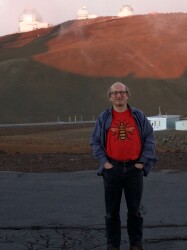BibTex format
@article{Greenslade:2018:mnras/sty023,
author = {Greenslade, J and Clements, DL and Cheng, T and De, Zotti G and Scott, D and Valiante, E and Eales, S and Bremer, MN and Dannerbauer, H and Birkinshaw, M and Farrah, D and Harrison, DL and Michalowski, MJ and Valtchanov, I and Oteo, I and Baes, M and Cooray, A and Negrello, M and Wang, L and van, der Werf P and Dunne, L and Dye, S},
doi = {mnras/sty023},
journal = {Monthly Notices of the Royal Astronomical Society},
pages = {3336--3359},
title = {Candidate high-z protoclusters among the Planck compact sources, as revealed by Herschel-SPIRE},
url = {http://dx.doi.org/10.1093/mnras/sty023},
volume = {476},
year = {2018}
}

